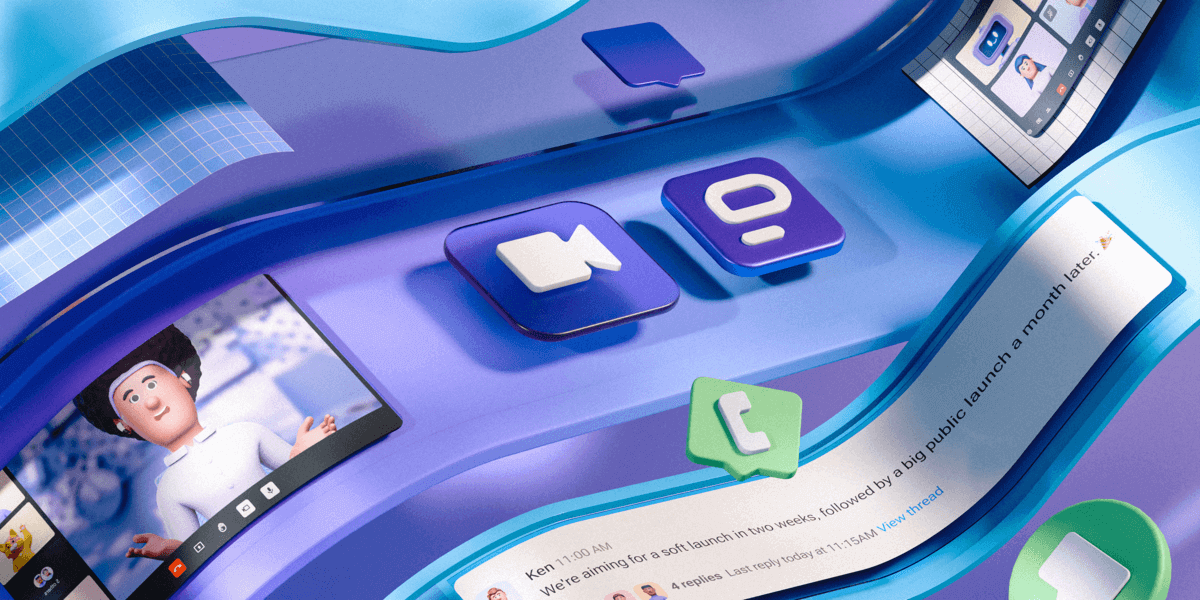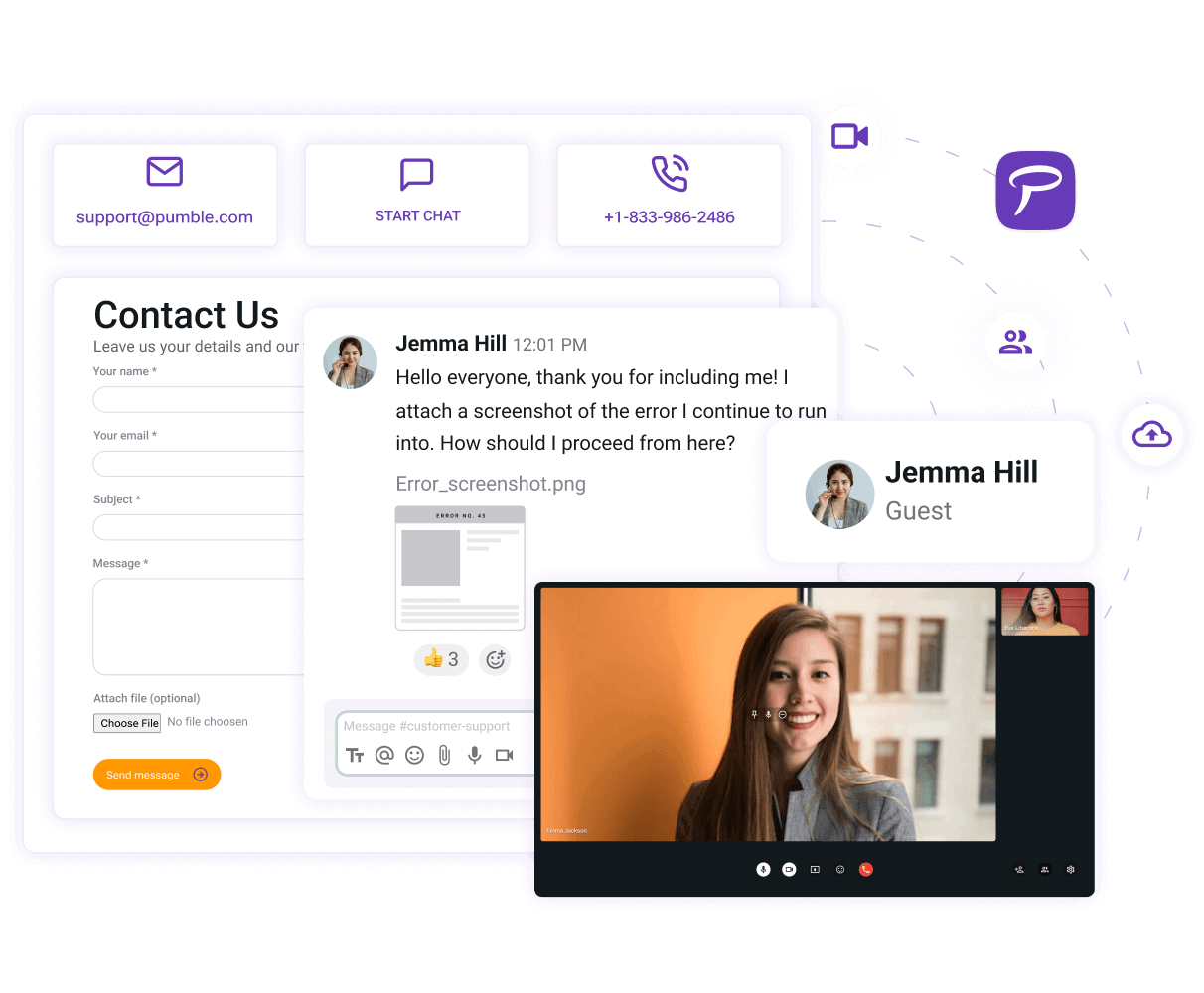Your customers want to connect with you. Are you giving them the chance to do it?
Customers want genuine, personal interactions and easy access to your business through their preferred channels of communication.
So, how can you build lasting business-client relationships while keeping engagement high?
You can try implementing an omnichannel communication strategy.
The omnichannel approach to client communication lets your business meet customers where they are, using channels they find most convenient and accessible.
Let’s explore the different types of communication you can use to connect with your clients and how to implement them in your business.

What is omnichannel client communication?
Omnichannel client communication is a strategy where businesses provide a cohesive and integrated customer support experience across multiple platforms and channels.
The goal is to ensure that clients can switch between different communication methods without having to repeat themselves or encounter fragmented service.
Here are some channels of communication a business can use:
- Social media,
- Email,
- Chat,
- Phone calls, or
- Team communication tools.
This is different from multichannel communication, which offers multiple touchpoints but often lacks integration. In a multichannel approach, a customer’s email interaction may not be connected to their social media query, creating a disjointed experience.
Omnichannel communication, on the other hand, unifies all these platforms, ensuring a smooth flow of information.
For instance, a customer might start an inquiry on social media, follow up via email, and then continue the conversation through a team communication tool, where they get to directly communicate with your team.

The key to omnichannel communication is that the conversation is:
- Continuous,
- Seamless, and
- Always relevant, no matter the platform.
Types of channels for omnichannel communication
Understanding the different types of communication channels helps businesses engage customers effectively at every stage of their journey.
Here’s a look at the most common channels:
- Social media — Using social media can boost your visibility and help you reach more customers while offering a direct way for them to interact with your brand.
- Email — Email allows businesses to stay in touch with customers, offering personalized updates, promotions, and news.
- SMS — SMS is a quick and direct way to send offers, updates, and order statuses to customers on their mobile devices.
- Chatbots — Chatbots provide 24/7 support, handling customer inquiries and automating tasks like scheduling or providing simple information.
- Live chat — Live chat offers instant communication with the customer directly through your website.
- Push notifications — Push notifications help re-engage customers, promote new products, and send reminders about items left in carts.
- In-app messaging — In-app messaging offers real-time support within an app, creating a personalized experience and boosting user engagement.
- Video calls — Video calls offer a personal, face-to-face interaction that helps build trust and provide in-depth support for more complex issues.
💡 Pumble Pro Tip
If you’re looking for tools to help you communicate with clients, we’ve compiled a list of the best customer communication tools you can use. Check out the link below to find out what they are:
Pumble makes client communication seamless
How to create an omnichannel communication strategy
To successfully implement an omnichannel communication strategy, businesses need to adopt the right practices.
Here’s how to do it effectively:
- Ensure platform integration — All communication platforms should work in harmony, from CRM systems to team communication tools. This prevents information silos and creates a unified experience.
- Maintain consistency in messaging — Whether a customer reaches out via social media or joins a Pumble chat, the message and service should be consistent. Train your team to ensure that tone and service standards are upheld across all channels.
- Train staff for omnichannel service delivery — Ensure your team is trained to handle communication across multiple channels, which range from direct client interaction to internal collaboration with team members.
- Use automation wisely — Automate where appropriate. Using chatbots for initial inquiries or follow-up emails saves time and energy, but you need to ensure that clients can seamlessly transition to human agents when necessary.
- Measure and adapt — Continuously track performance metrics, analyze client feedback, and adjust your strategy to improve the customer experience across all communication channels.
Benefits of omnichannel communication
With so many options to connect, customers expect more than just a basic interaction.
They want consistent, personalized, and accessible communication across multiple platforms.
Here’s why omnichannel communication is a must for modern businesses:
- Enhanced customer experience — Clients don’t want to be stuck in silos. Omnichannel strategies allow them to interact with your business how and when they prefer, without repeating themselves or experiencing disconnection. This results in higher satisfaction and loyalty.
- Personalization — Omnichannel systems track customer interactions across all platforms, allowing businesses to offer tailored communication based on previous interactions. For instance, Pumble’s platform enables businesses to maintain a personal touch when interacting with clients through guest access, as they can access conversation history and context in real time.
- Efficiency — Omnichannel systems enhance efficiency by integrating all communication methods into one ecosystem. Tools like Pumble are particularly useful for businesses, as they allow team members to collaborate with clients directly, providing immediate responses and solutions through a shared workspace.
- Consistency across platforms — Whether a customer reaches out through social media, phone, or email, they expect the same level of service and understanding. A strong omnichannel approach ensures that all channels are unified and consistent, preventing frustration from fragmented communication.
- Meeting customers where they are — Clients use multiple communication tools daily, so businesses need to be accessible on all relevant platforms. This might include traditional methods like email, as well as more collaborative tools such as Pumble, which allows clients to engage directly with customer support teams in real-time.
- Analytics and insights — Omnichannel strategies generate valuable data on customer behavior and preferences, which can be used to improve service for future interactions.
- Building brand loyalty and trust — Customers who receive a seamless, personalized experience are more likely to stay loyal to your brand. Omnichannel communication builds trust by providing responsive and cohesive service no matter which platform clients use.
An omnichannel communication strategy is beneficial for both your customers and your business.
How Pumble can help you create an omnichannel client experience
Pumble is an all-in-one communication platform that can help you build an effective omnichannel strategy.
It supports omnichannel communication in many different ways:
- Guest access — Pumble allows businesses to bring clients into their team’s communication space securely and easily. With guest access, you can have external clients engage directly with your team. This feature enhances transparency and ensures that clients are always in the loop, without needing to juggle between different apps or tools.
- Real-time collaboration — With Pumble, clients, and teams can communicate in real time. This speeds up the resolution of queries and provides an ongoing dialogue, which is especially helpful for complex projects or continuous service updates.
- Context retention — Pumble ensures that all team members and clients have access to conversation history, so anyone jumping into a discussion can get up to speed instantly. This prevents the need for clients to re-explain issues and ensures that customer queries are handled consistently.
- Accessible across devices — Pumble works across devices, allowing team members and clients to communicate seamlessly whether they’re on desktop, mobile, or tablet.
So, if you need a powerful and reliable tool to enhance your client communication
And, if you’re looking to increase productivity in your business as a whole, try out CAKE.com’s Productivity Bundle!







